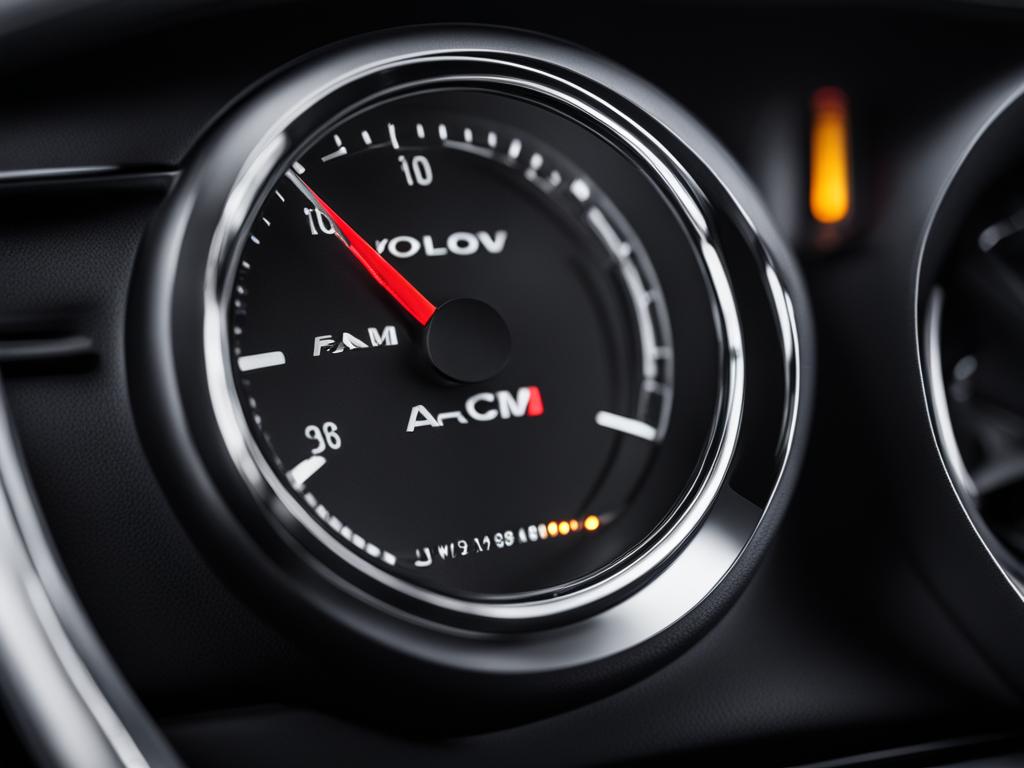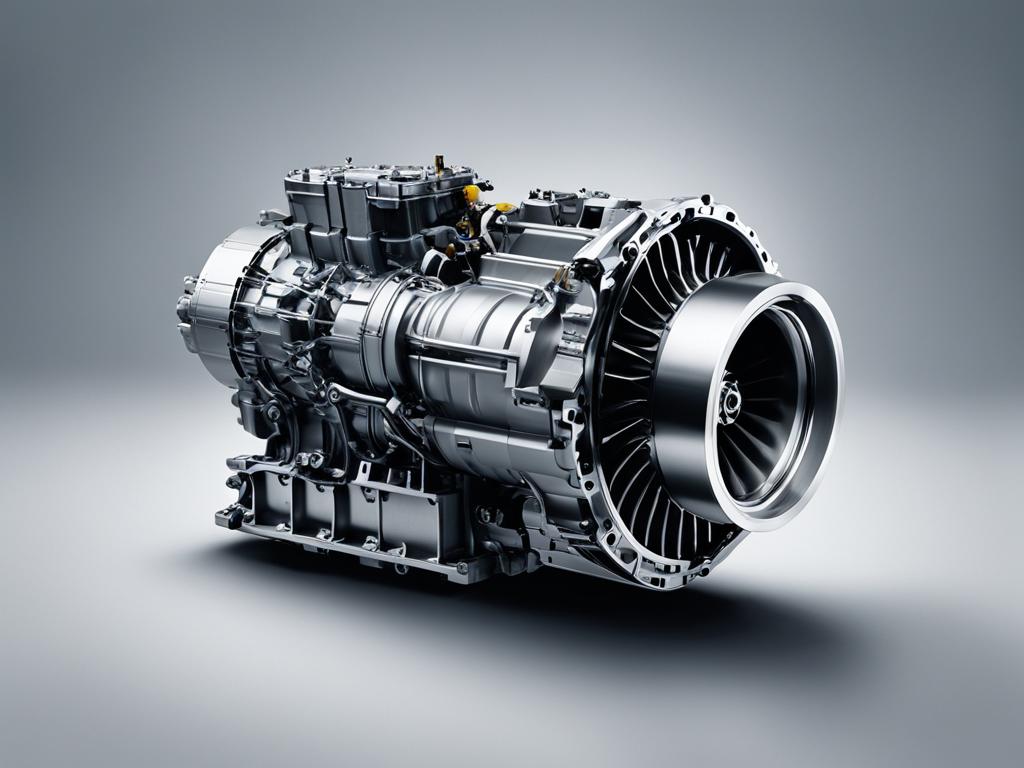ACM Fault Volvo: Quick Fixes & Expert Tips
The Volvo Aftertreatment Control Module (ACM) fault is a common issue that Volvo vehicle owners may encounter. When this fault occurs, it indicates certain problems within the vehicle’s system. It is important to address the ACM fault promptly to ensure proper functionality and prevent further issues.
The ACM fault can be caused by various factors, including software or firmware malfunction, faulty wiring or connections, visible damage to the ACM, contaminated diesel exhaust fluid (DEF), and accidental damages. To fix the ACM fault, diagnostic scans, inspecting the ACM, redoing wiring on the ACM connector, replacing blown fuses, cleaning the DEF and battery, and software update or reprogramming may be required.
Key Takeaways:
- ACM faults indicate issues within the Volvo vehicle’s system.
- Common causes of ACM faults include software malfunction, faulty wiring, visible damage to the ACM, contaminated DEF, and accidental damages.
- To fix ACM faults, diagnostic scans, ACM inspection, wiring repairs, fuse replacements, DEF and battery cleaning, and software updates may be necessary.
- ACM faults can lead to engine derate and decreased vehicle speed.
- Proper maintenance and repairs are crucial to resolving ACM faults and ensuring the longevity of Volvo vehicles.
Causes of Volvo ACM Fault
The Volvo ACM fault can occur due to various reasons. Understanding these causes is essential for addressing the issue effectively. The following factors can contribute to the ACM fault in Volvo vehicles:
- Software Malfunction: Outdated or incompatible ACM software can lead to malfunctions and trigger fault codes. Keeping the ACM software up to date is crucial to prevent software-related issues.
- Faulty Wiring: Loose connections, dislodged ACM main power wire, or faulty wiring can disrupt the communication and operation of the ACM. This can result in the ACM fault message and require proper wiring inspections and repairs.
- Visible Damage: Internal failures, overheating, or debris accumulation within the ACM can cause visible damage and affect its functionality. It is important to inspect the ACM for any signs of damage to determine if it needs repair or replacement.
- Contaminated DEF: Contaminants in the diesel exhaust fluid (DEF) can negatively impact the emission control system, including the ACM. Contaminated DEF can lead to malfunctioning and trigger fault codes associated with the ACM.
- Accidental Damages: Vehicle accidents or physical impacts can result in ACM faults. Accidental damages can cause internal components to shift or break, disrupting the ACM’s operation and triggering fault codes.
Identifying the underlying cause of the ACM fault is crucial for effective troubleshooting and repair. Diagnostic scans and inspections can help pinpoint the specific issue and ensure the appropriate solutions are implemented.
ACM Fault Codes
ACM fault codes are specific error codes generated by the vehicle’s diagnostic system to indicate the underlying issues causing the ACM fault. These codes provide valuable information to technicians and facilitate the diagnosis and repair process. Proper interpretation of the fault codes is essential for identifying the root cause and implementing the necessary solutions.
| ACM Fault Code | Meaning |
|---|---|
| F001 | Software/firmware malfunction |
| F002 | Faulty wiring/connection |
| F003 | Visible damage to ACM |
| F004 | Contaminated DEF |
| F005 | Accidental damages |
How to Fix Volvo ACM Fault
To resolve the Volvo ACM fault, a systematic approach is required. Here are the steps to take:
- Diagnostic Scan: Perform a diagnostic scan to identify the specific error codes and components causing the ACM fault. This will provide valuable insights into the root cause of the issue.
- Inspect ACM: Thoroughly examine the ACM for any defects or visible damage. Look for signs of overheating, debris build-up, or other physical issues that may be contributing to the fault.
- Redo Wiring: Check for any loose or dislodged wiring on the ACM connector. If necessary, redo the wiring to ensure a secure connection and eliminate any potential faults caused by wiring issues.
- Replace Blown Fuses: If you identify any blown fuses related to the ACM, replace them with new ones. Blown fuses can disrupt the proper functioning of the ACM and cause fault codes.
- Clean DEF and Battery: Clean the diesel exhaust fluid (DEF) tank and ensure the battery is in good condition. Contaminated DEF and a weak battery can trigger ACM faults, so it’s essential to address these issues.
- Software Update or Reprogramming: Check for the latest software updates or reprogramming options for the ACM. Updating the software can resolve known issues and enhance the ACM’s performance.
By following these steps, you can effectively troubleshoot and fix the ACM fault in your Volvo vehicle.

ACM Faults: Impact and Importance
ACM faults in Volvo vehicles can have a significant impact on engine performance and the overall driving experience. One of the most common consequences of an ACM fault is engine derate, where the engine power reduces, and the vehicle speed drops to approximately 5mph.
Addressing ACM faults promptly is crucial to prevent further issues and potential engine failure. Ignoring these faults can lead to costly repairs and downtime for your vehicle.
Diagnostic scans play a crucial role in identifying the root cause of an ACM fault. By performing a comprehensive diagnostic scan, technicians can retrieve error codes that provide valuable insights into the underlying issue.
If no error codes are displayed during the diagnostic scan, professional help may be necessary to determine the cause of the fault. Expert technicians can conduct in-depth inspections and utilize their expertise to identify the fault and recommend appropriate solutions.
“Don’t ignore ACM faults in your Volvo vehicle. Prompt attention and proper diagnostics are key to preventing further damage and ensuring optimal performance.”
To better understand the impact and importance of addressing ACM faults, it is essential to consider the potential consequences of engine derate. Imagine driving on a busy highway and suddenly experiencing a significant reduction in vehicle speed. This sudden loss of power can be dangerous and compromise both your safety and the safety of others on the road.
Furthermore, engine derate caused by ACM faults can result in decreased productivity and efficiency for businesses relying on Volvo vehicles for transportation and delivery purposes. Delays and reduced performance can lead to missed deadlines and dissatisfied customers.
Addressing ACM faults promptly with the help of diagnostic scans and expert technicians can help ensure that your Volvo vehicle operates at its optimal performance level, minimizing the risk of engine derate and maximizing productivity.
By taking preventive measures and addressing ACM faults promptly, you can avoid costly repairs, enhance vehicle safety, and maintain the reliability of your Volvo vehicle.
Next, we will explore common problems related to the Volvo I-Shift transmission and provide solutions for diagnosing and repairing these issues.
Volvo I-Shift Transmission Problems
The Volvo I-Shift transmission, known for its advanced technology and smooth operation, can experience certain issues that require attention. Understanding common problems associated with the I-Shift transmission can help drivers and mechanics diagnose and resolve these issues effectively.
Gear Shifts
One of the most common issues faced with the Volvo I-Shift transmission is difficulty with gear shifts. Drivers may experience problems with gear engagement, such as reverse gears not engaging properly or delayed responses when shifting between gears. These issues can affect the overall performance and drivability of the vehicle.
Unusual Noises
Another sign of potential problems with the I-Shift transmission is the presence of unusual noises during operation. These noises, such as grinding, whining, or clunking sounds, can indicate mechanical issues within the transmission system. Timely diagnosis and repair are crucial to prevent further damage and ensure optimal performance.
Transmission Fluid
The transmission fluid plays a vital role in the smooth operation of the I-Shift transmission. Low fluid levels or contaminated fluid can lead to various transmission problems. Monitoring the transmission fluid levels regularly and ensuring it is clean and at the appropriate level is essential for preventing potential issues.
Fault Codes
Fault codes can be valuable clues when diagnosing and troubleshooting problems with the Volvo I-Shift transmission. When an issue is detected, the transmission system generates fault codes that can help identify the specific problem area or component requiring attention. Utilizing diagnostic tools to read and interpret these fault codes is key to determining the appropriate course of action.
To address Volvo I-Shift transmission problems effectively, it is recommended to consult with a qualified mechanic or Volvo service center. They have the expertise and resources to diagnose and resolve complex transmission issues, minimizing vehicle downtime and ensuring reliable performance.
| Common Volvo I-Shift Transmission Problems | Possible Causes |
|---|---|
| Difficulty with gear shifts | – Malfunctioning clutch – Faulty solenoids – Worn synchronizers |
| Unusual noises during operation | – Internal component damage – Bearing failure – Insufficient lubrication |
| Transmission fluid problems | – Low fluid level – Contaminated fluid – Leaks or damaged seals |
| Fault codes | – Electrical issues – Sensor malfunctions – Control module failures |

Diagnosing and Repairing Volvo I-Shift Transmission
When it comes to Volvo I-Shift transmission issues, proper diagnostics play a crucial role in identifying and rectifying any problems. One of the key tools in diagnosing these issues is the use of fault codes, which enable technicians to pinpoint specific malfunctions within the transmission system.
Once the fault codes have been identified, decisions regarding repair or replacement can be made based on the specific problem at hand. It is essential to address these issues promptly to prevent further damage to the transmission and ensure optimal performance.
However, proactive measures can also be taken to maintain the longevity and reliability of the Volvo I-Shift transmission. Regular maintenance is vital to keep the transmission running smoothly. This includes checking transmission fluid levels and quality to ensure proper lubrication and cooling of the system.

Expert Tip: Routine Maintenance for Volvo I-Shift Transmission
To ensure the optimal performance and longevity of your Volvo I-Shift transmission, follow these maintenance guidelines:
- Regularly check the transmission fluid level and quality. Low fluid levels or contaminated fluid can lead to transmission issues.
- Inspect the transmission for any signs of leaks or damage, such as worn seals or loose connections.
- Follow the manufacturer’s recommended service intervals for fluid changes and filter replacements.
- Pay attention to any unusual noises or vibrations during operation and seek professional assistance if necessary.
By prioritizing routine maintenance and addressing any transmission issues promptly, you can ensure the continued reliability and performance of your Volvo I-Shift transmission.
Conclusion
When it comes to ACM faults and Volvo I-Shift transmission problems, proper diagnosis, maintenance, and repairs are essential. Addressing these issues promptly is crucial for ensuring the safety and performance of your Volvo vehicle.
If you encounter an ACM fault in your Volvo, it is recommended to perform diagnostic scans to identify the specific error codes and components causing the issue. Inspecting the ACM for defects and checking the wiring connections can help resolve the fault. In some cases, replacing blown fuses or updating the ACM software may be necessary.
Similarly, for Volvo I-Shift transmission problems, diagnosing the issues using fault codes is crucial. Based on the specific problem identified, you can make informed decisions regarding repairs or replacements. Regular maintenance, including checking transmission fluid levels and quality, is vital to ensure the longevity and reliability of the I-Shift transmission.
Remember, prevention is key. Adhering to routine checks and maintenance schedules can help prevent unexpected repairs and extend the lifespan of your Volvo vehicle equipped with the ACM and I-Shift transmission. Take proactive measures to ensure the optimal performance of your Volvo and keep it running smoothly for years to come.
FAQ
What is the ACM fault in Volvo?
The ACM fault is an error message that indicates certain issues within a Volvo vehicle’s Aftertreatment Control Module (ACM).
What are the common causes of the ACM fault?
Common causes of the ACM fault include software or firmware malfunction, faulty wiring or connections, visible damage to the ACM, contaminated diesel exhaust fluid (DEF), and accidental damages.
How can the Volvo ACM fault be fixed?
To fix the Volvo ACM fault, diagnostic scans, inspecting the ACM, redoing wiring on the ACM connector, replacing blown fuses, cleaning the DEF and battery, and software update or reprogramming may be required.
What can ACM faults lead to?
ACM faults can lead to engine derate, where engine power reduces and vehicle speed drops to around 5mph.
What are some common problems with the Volvo I-Shift transmission?
Common problems with the Volvo I-Shift transmission include difficulty with gear shifts, unusual noises during operation, and transmission fluid problems caused by low levels or contamination.
How can Volvo I-Shift transmission problems be diagnosed and repaired?
Proper diagnostics using fault codes are essential for Volvo I-Shift transmission issues. Decisions on repair or replacement should be made based on the specific problem identified.
What is the importance of addressing ACM faults and Volvo I-Shift transmission problems promptly?
Promptly addressing ACM faults and Volvo I-Shift transmission problems is important to ensure vehicle safety and performance. Regular checks and adherence to maintenance schedules are crucial for preventing unexpected repairs and maximizing the lifespan of Volvo trucks and vehicles equipped with the ACM and I-Shift transmission.




